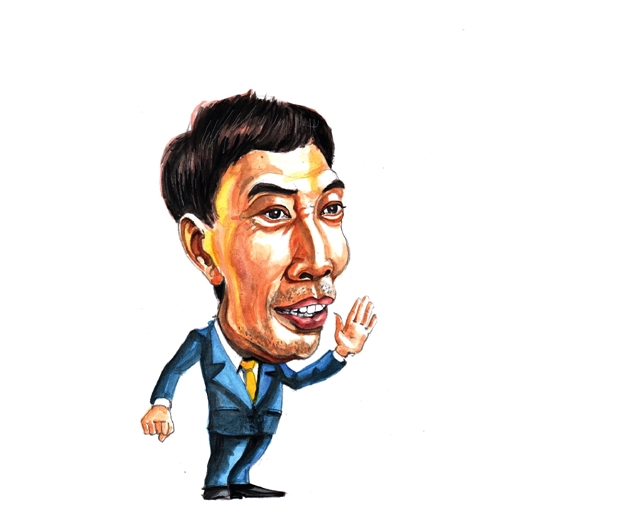Is Vietnamese đồng’s depreciation worth worrying?
 |
Võ Trí Thành*
After the exchange rate shock in early 2011 that saw the Vietnamese đồng devalued by 9.3 per cent against the US dollar, the foreign exchange market has gradually stabilised, without considerable volatility.
The success was thanks to the central bank’s tightened monetary policy, the increase of deposit interest rates in much favour of đồng rather than US dollar, plus the restriction put on those eligible to borrow foreign currencies, and the increase of the country’s foreign reserves. The annual depreciation rate of Vietnamese đồng was in general just less than 2 per cent since then.
But in the fall of 2022, amid some external headwinds such as high inflation and the US’ Fed raising dollar interest rates to curb inflation – which put pressure on foreign exchange rates – and the shaking of the financial market, the State Bank of Vietnam (SBV) increased two times its main policy rates by total 200 basis points.
As the SBV reduced its direct foreign exchange interventions in late 2022, the Vietnamese đồng temporarily depreciated by nearly 9 per cent but pressures abated following the policy rate hikes. At the end of 2023 đồng only depreciated year-on-year less than 3 per cent. Since March 2023, as the macroeconomic and financial stability resumed, the SBV lowered its main policy rates four times by 0.5-2 percentage points to support the faltering economic activity. The exchange rate has remained stable and modest reserve accumulation has resumed in 2023.
However, over the past one to two months, the foreign exchange market has experienced strong volatilities. Notably, the đồng was weakened by as much as 4.9 per cent by the end of April, much higher than the rate of 1-3 per cent as expected by experts and analysts early this year.
The depreciation this time could be attributed to the confluence of global and domestic factors.
First, on the external front, the cooling of US inflation is slowing down, causing the Fed to maintain the monetary policy tightening. Though the agency planned to slash key interest rates three times this year, it has not yet determined a specific time to loosen its monetary policy and lower the interest rate. There is expectation that the Fed will cut its benchmark interest rate in a slower pace and with less extent in the near future, therefore, the US dollar value has still appreciated. The appreciation of the US dollar has led to the depreciation of the currencies of many countries around the world, including the đồng.
On the domestic front, the excess Vietnamese đồng liquidity, resulting from weak credit growth, has widened the interest rate gap between Vietnamese đồng and US dollar in the interbank market, with đồng interest rates remaining low and US dollar interest rates considerably higher. There are some point in time the interbank interest rate for Vietnamese đồng-denominated loans was reduced to nearly 0 per cent while that for US dollar-denominated loans was hiked to 5 per cent.
In addition, there is also a surge in the demand for foreign currencies as local firms need to import more input materials for production to fulfil the increasing orders while foreign direct investment firms are also transfering profits to their home countries.
It is also noteworthy that the VND/USD exchange rate is put under more pressure as gold prices have skyrocketed by as much as 16 per cent so far this year (and by 30 per cent since late 2022) as indicated in VinaCapital Economist’s Note dated April 26 this year.
Low interest rates of đồng deposits maintained by commercial banks have caused Vietnamese people to seek other financial investment channels that bring higher returns. They are also more enthusiastic in buying gold given an uptrend of international gold price. The trend ultimately entails the purchase of US dollar for importing gold (including smuggling), which means US dollar is more appreciated.
But what does đồng depreciation mean to the Vietnamese economy?
Theoretically, a depreciated currency supports exports as a weak currency means that domestic goods are cheaper abroad. Therefore, in an open economy as Việt Nam, a competitive exchange rate would help boost exports, especially when the country still depends on exports as a driver for growth in the recovery period post COVID.
However, an excessive depreciation would in turn cause more inflationary pressure due to rising prices of imports. Moreover, when interest rates in one country are higher than in others, investors may seek to take advantage of the higher returns by moving their capital to that country. This can result in a substantial outflow of investments from countries with rather low interest rates, which ultimately have negative impacts on international balance of payments.
In other words, in an open economy, central banks always face a policy trilemma while trying to manage conflicting goals which are total capital mobility, a fixed exchange rate and autonomous monetary policy. It is not possible to achieve all three at once.
As Việt Nam navigates the global economic headwinds, the complex challenge that the SBV is grappling with is maintaining the relative stability of exchange rate while supporting the economic growth – a priority in Việt Nam’s economic policy.
To stabilise the exchange rate, in the past, the SBV has employed a multi-pronged approach. It has withdrawn excess liquidity of đồng from the system by issuing treasury bills to Việt Nam’s commercial banks, which help raise interbank overnight interest rates, managed the…
Read More: Is Vietnamese đồng’s depreciation worth worrying?
2024-05-07 01:01:00
